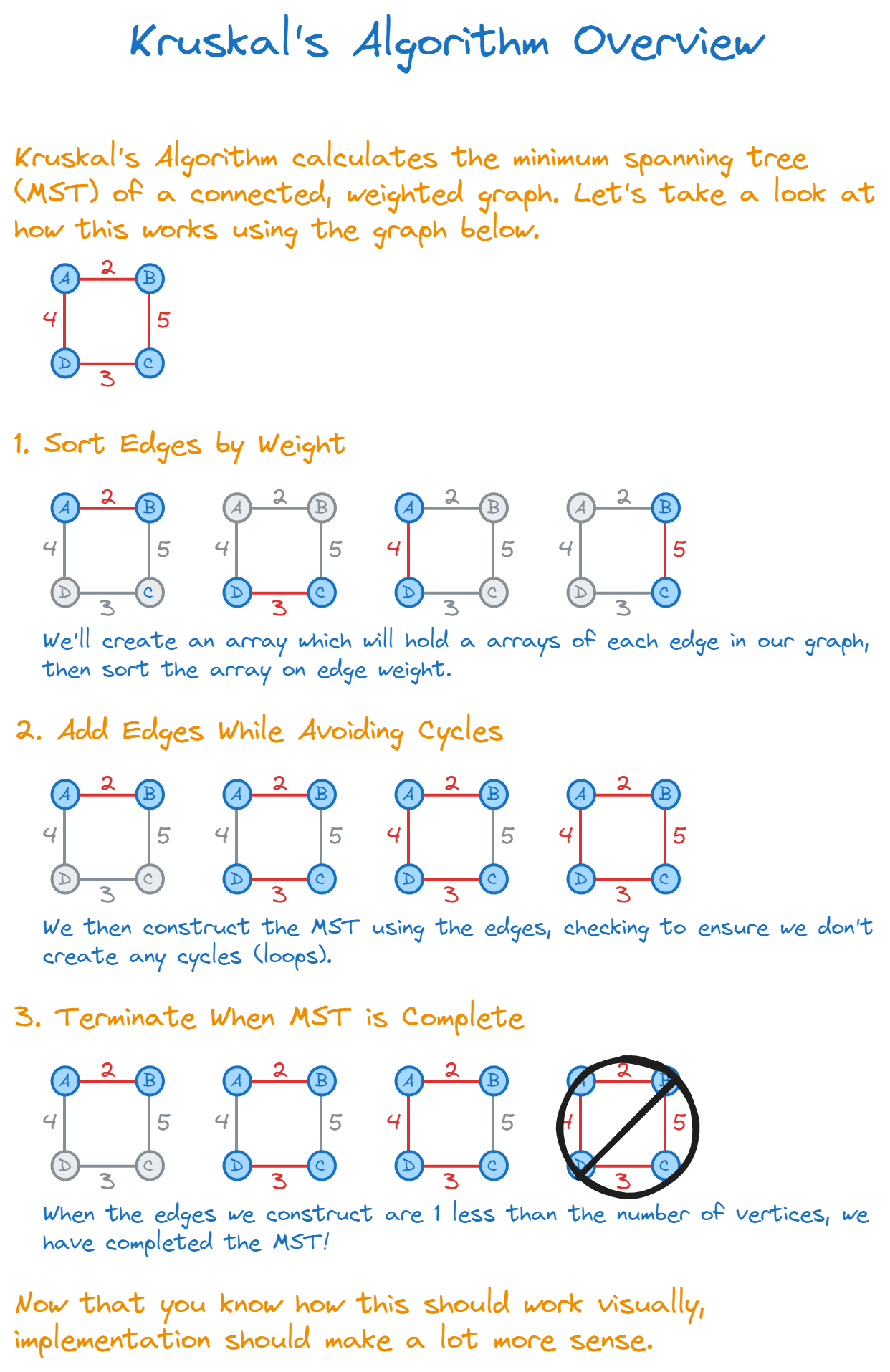Kruskal's Algorithm: A Hands-On Guide with Visuals
Ready to dig into Kruskal's Algorithm? Let's break it down, from the big picture to the nitty-gritty, with code snippets and ASCII diagrams to help visualize each step.
Quick Recap: The Three Pillars of Kruskal's Algorithm
Core Principles
- Empty Canvas: Start with no edges, just vertices.
- Bargain Hunt: Add edges by ascending weight.
- No Loops: Avoid cycles.
Why It Works
- Strategy: Greedy approach—grab the cheapest edge.
- Outcome: A Minimum Spanning Tree (MST) without cycles.
Step-By-Step: Building the MST
Let's use a sample graph for this walkthrough. Here's our original graph:
TEXT
1 A--2--B
2 | |
3 4 5
4 | |
5 D--3--C1. Sort Edges by Weight
First, list edges in ascending order by weight.
1let edges = [['2', 'A', 'B'], ['3', 'C', 'D'], ['4', 'A', 'D'], ['5', 'B', 'C']];
2edges.sort();2. Add Edges While Avoiding Cycles
Go through the sorted list and add edges to the MST, skipping any that would create a cycle.
1let mst = new Set();
2
3// For each edge in sorted list
4for (let edge of edges) {
5 let weight = edge.weight;
6 let u = edge.u;
7 let v = edge.v;
8 // Check for cycle and add if safe
9}For example:
- Add edge A-B (weight 2). MST becomes:
TEXT
1 A--B- Next, add edge C-D (weight 3). MST becomes:
TEXT
1 A--B
2
3 C--D- Add A-D: This edge will connect the two separate trees and does not form a cycle.
TEXT
1 A--B
2 |
3 D--C- Skip B-C: This would create a cycle, so it's skipped.
3. Terminate When MST is Complete
Stop once the MST has ( V - 1 ) edges.
1if (mst.length === vertices.length - 1) {
2 break;
3}MST In Action: Seeing the Pieces Come Together
As you add each edge, the MST takes shape:

After adding A-B:
TEXT1A--BAfter adding C-D:
TEXT1A--B 2 3C--DAfter adding B-C:
TEXT1A--B 2| 3D--C
With these steps, you've built an MST from scratch.


